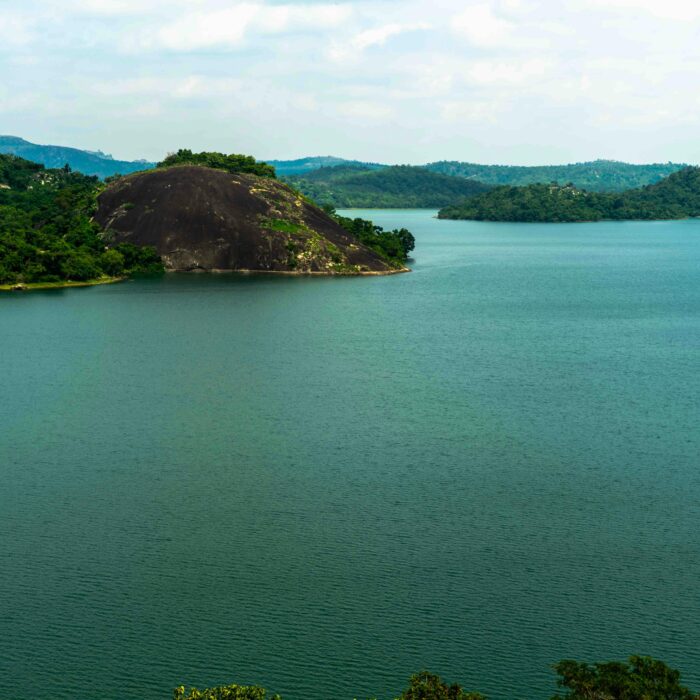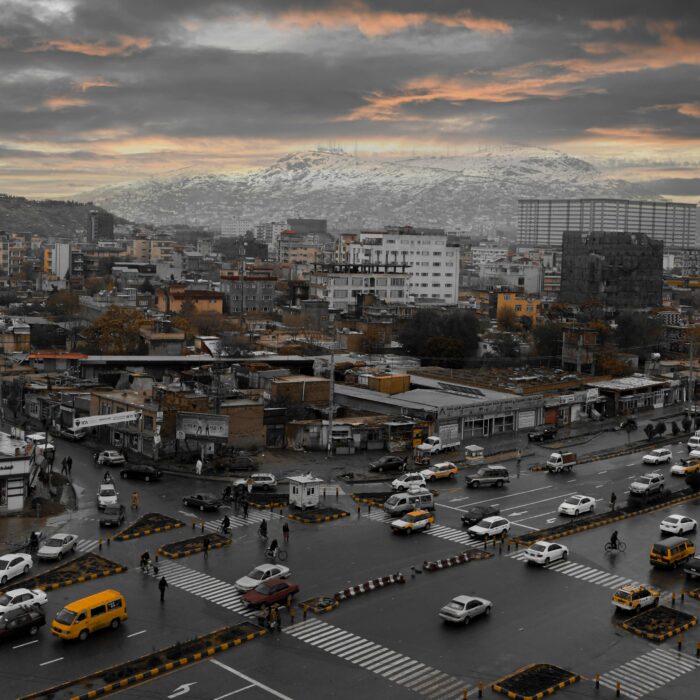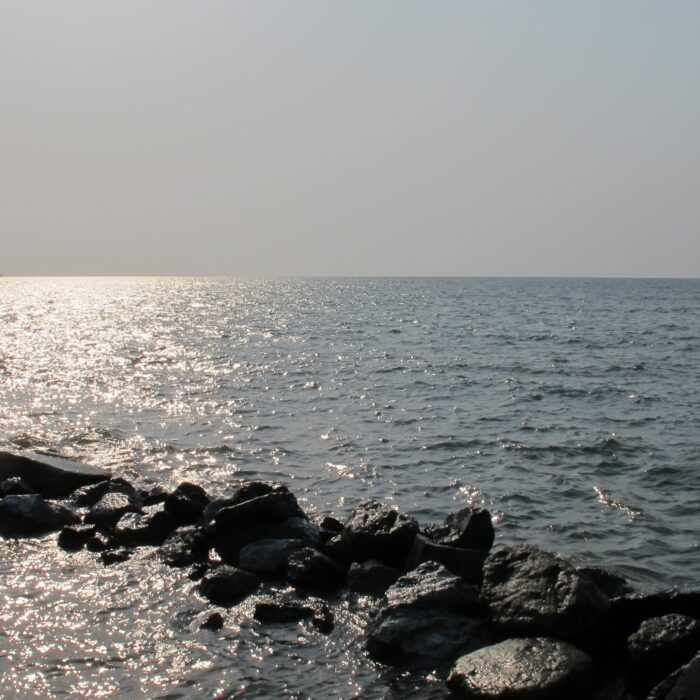The Kawasaki Z650, the successor to the renowned “ER-6n,” is a name we’ve come to know. But is it better than its classmate, the Ducati Monster 797? Italy vs. Japan in the increasingly popular segment of mid-sized naked bikes.
In all seriousness, the Kawasaki Z650 and Ducati Monster 797 make up one of the most popular pairs among novice riders, akin to the Polo and Solaris in the world of motorcycles. Notably, the Kawasaki is assembled in Thailand, while the Ducati hails from Europe. However, there’s a possibility that the 797 might also be produced in Thailand soon, as “Italian” bikes are already being manufactured there for the Asian market.

Kawasaki Z650
At first glance, the Kawasaki appears more aggressive, while the Ducati opts for simplicity. Another significant difference is that the “Japanese” bike feels more compact, while the creation of Italian engineers is more spacious and comfortable. The Ducati features the beginnings of a fairing, but the Kawasaki boasts superior mirrors that provide a clearer view and, importantly, they fold, unlike the massive and fixed Italian counterparts. Interestingly, even the official website doesn’t provide information on the width of the Ducati 797, so we had to break out the measuring tape – the result: 800 mm, which is 25 mm more than the Z650. These 25 millimeters can make a difference in dense traffic, especially when compared to the slim Kawasaki Z650, which seems like a yoga master enduring a lifetime under the scorching sun.

The Kawasaki instrument panel is far from an art masterpiece, but all the necessary information is presented clearly and understandably.
Both bikes have abbreviated tails – stylish but impractical for carrying luggage, which you’ll have to place either behind the passenger seat or over the passenger’s shoulders. Speaking of the latter, the Japanese have left very little legroom for the passenger, and sitting there is almost as uncomfortable as on a sportbike. On the other hand, the Ducati 797 is more welcoming for the passenger.
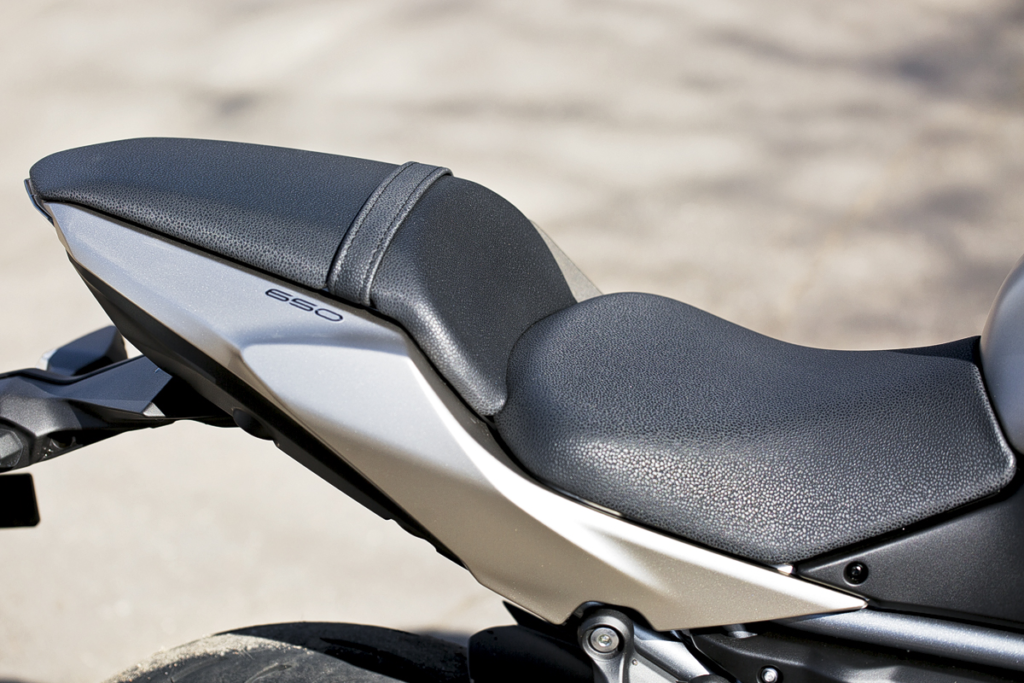
The seat is decent, but the rider should be no taller than 180 cm, and the demands for the passenger seat are stricter — a maximum of 165 cm.
These motorcycles feature twin-cylinder engines. The Z650 houses a parallel twin, which is essentially the reincarnation of the engine from the sportbike Kawasaki GPZ 500 – a true long-liver that remained on the market from 1987 to 2009. As for Ducati, with its signature L-twin desmodromic air-cooled engine, they’ve regressed. The Monster family owes its existence to designer Miguel Galluzzi, who completely stripped down the Ducati 888 sportbike in 1991. It’s believed that he formulated the essence of the subsequent successful philosophy of this series: “All you need on a motorcycle is a seat, tank, engine, two wheels, and handlebars.”
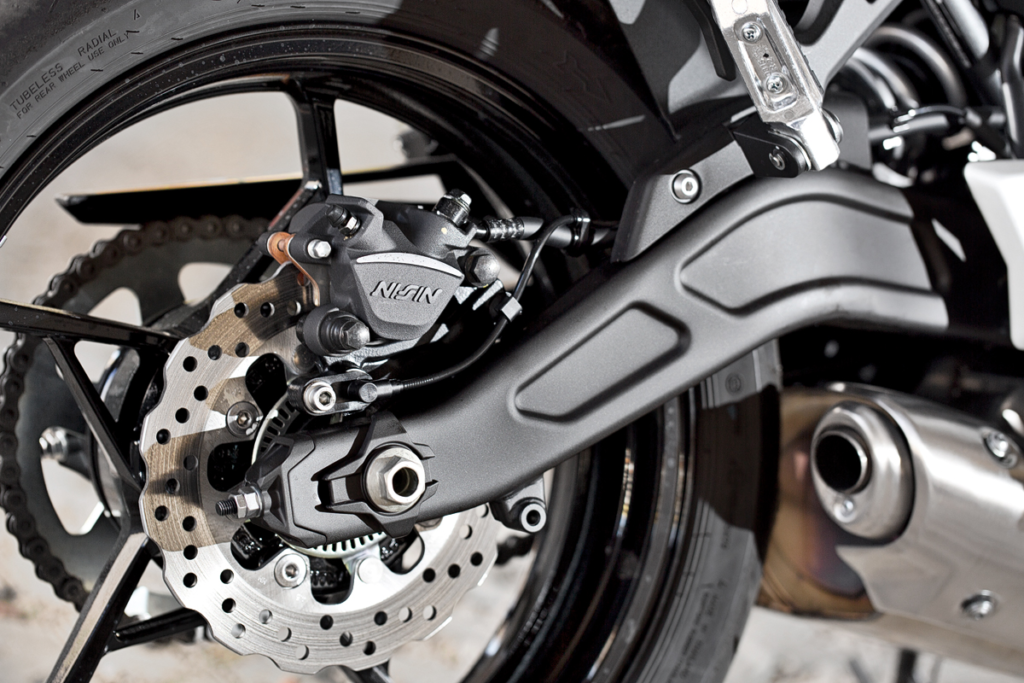
The asymmetric swingarm conceals an ultra-compact exhaust, allowing for further reduction in dimensions below the waterline.
But what do we have after decades? Take a look at the 1994 Ducati 900 Monster – and at our current candidate. An air-cooled engine, the same 73 hp, and a top speed of 200 km/h. And most importantly, no simplifications.
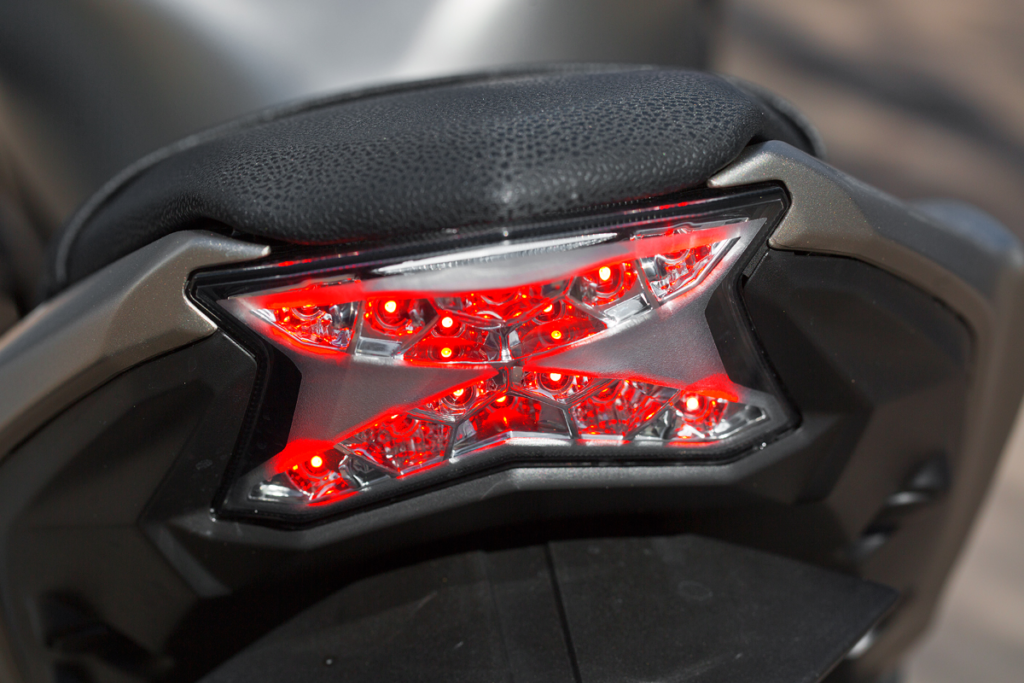
Yet, the present-day 797 is merely a shadow of its incredibly beautiful ancestors. However, the boundaries of classes have shifted. Back then, the 900 was the pinnacle, whereas this 797 is just the entry level. Perhaps that’s why we shouldn’t be too upset about the cutoff second throttle in the fuel system and the absence of adjustments on the fork? But I can’t help myself – it’s the cable clutch that really bothers me. After all, Ducati clutches have always been hydraulic!
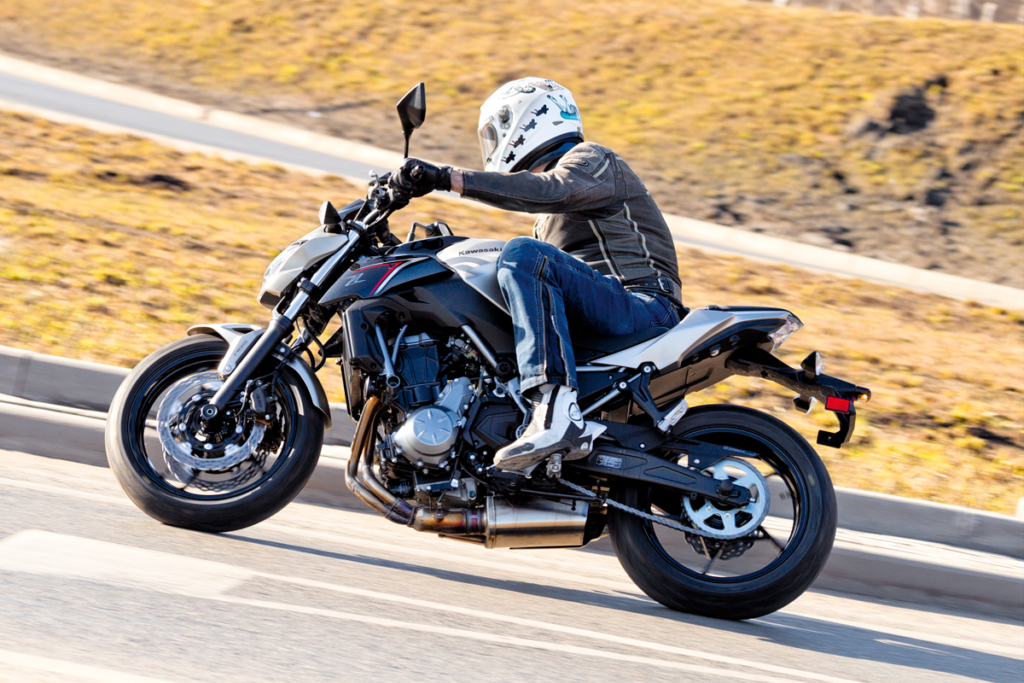
And why, for heaven’s sake, can’t they bring back the classic round headlight without these questionable design quirks? After all, Ducati is, above all, about beauty, mood, and emotions. Only then – the machinery.
Speaking of which, things aren’t all smooth on that front either.

Ducati Monster 797
So, where is that supposed 5-horsepower advantage over the competition? It seems to exist only on paper. In reality, both motorcycles effortlessly reach speeds of up to 180 km/h, performing almost equally, with the Ducati Monster having a slight edge. The maximum speed, as indicated on the speedometers, is also identical at 205 km/h, which translates to an actual 190 km/h. However, in the mid-range of the Z650’s tachometer, you’ll find significantly more torque and elasticity. In contrast, the Italian air-cooled engine only truly awakens at higher revs, typically above 6500 rpm. This seems counterintuitive since the Ducati 797 boasts a notable 154 cc advantage in displacement!
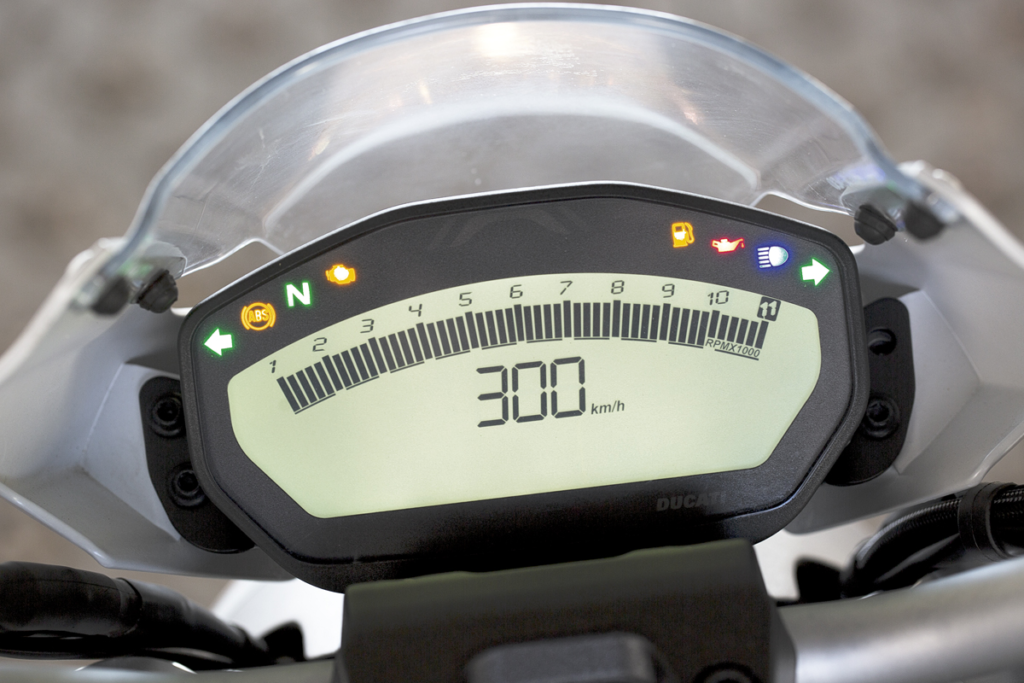
Ducati has almost nothing on the dashboard. Even the fuel gauge – the reserve light works for it
And then there’s the matter of sound. Italians are usually indifferent to noise regulations, but this time, they may have overdone it. The stock exhaust on the Ducati is meek and quiet, akin to a student at the back of the classroom trying to blend in and avoid getting called up to the board. In contrast, the “Zed” raises questions about how the Japanese managed to obtain certification: the stock exhaust delivers a powerful and resonant sound, more reminiscent of the refined tone of an expensive straight-through system. Some of your neighbors might start to resent you, while others will simply try to catch you and bring you down.

In contrast to what the competitor offers, the seat here is noticeably more accommodating for taller individuals.
In the city, the Kawasaki feels more agile, but it falls short in terms of braking potential. More precisely, in most cases, the Z650’s brakes are sufficient, while the Ducati 797’s radial Brembo calipers with 320 mm brake discs seem somewhat excessive for everyday civilian life.
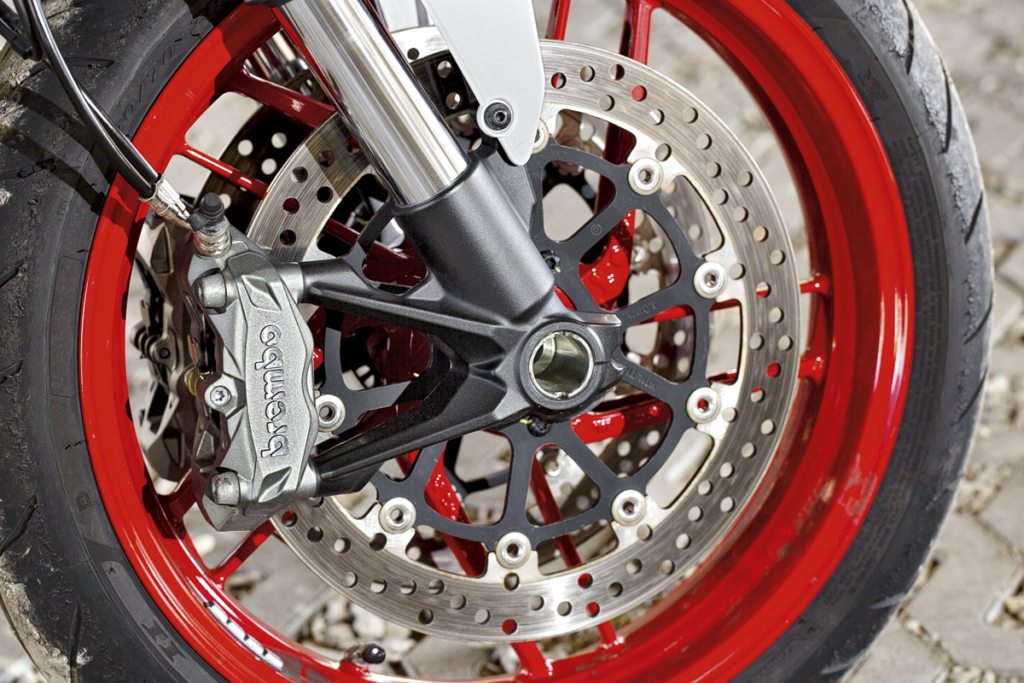
Radial four-piston Brembo calipers and 320 mm discs would adorn a 200-horsepower sportbike.
In the “handling” category, Ducati leaves the “Japanese” contender no chance whatsoever! This is partly due to the 180 mm rear tire (compared to the Z650’s 160 mm). Whether it’s quick maneuvers, sharp changes of direction, or the consistency in cornering, the smaller Monster surprisingly matches the skills of its older sibling, and one could even draw parallels with sportbikes!

On the other hand, the Kawasaki Z650 is simply a good, somewhat leisurely roadster. The handling deficiency I mentioned will only be noticeable on the racetrack, where both competitors are more exceptions than everyday guests. In the city, the Ducati’s significantly reduced steering angle becomes apparent after the first five minutes of the ride. That’s inconvenient! Just like the sudden occurrence of a “false neutral” between the fifth and sixth gears. Even the main neutral occasionally goes on an unpredictable siesta, and finding it on the first try becomes a stroke of luck.
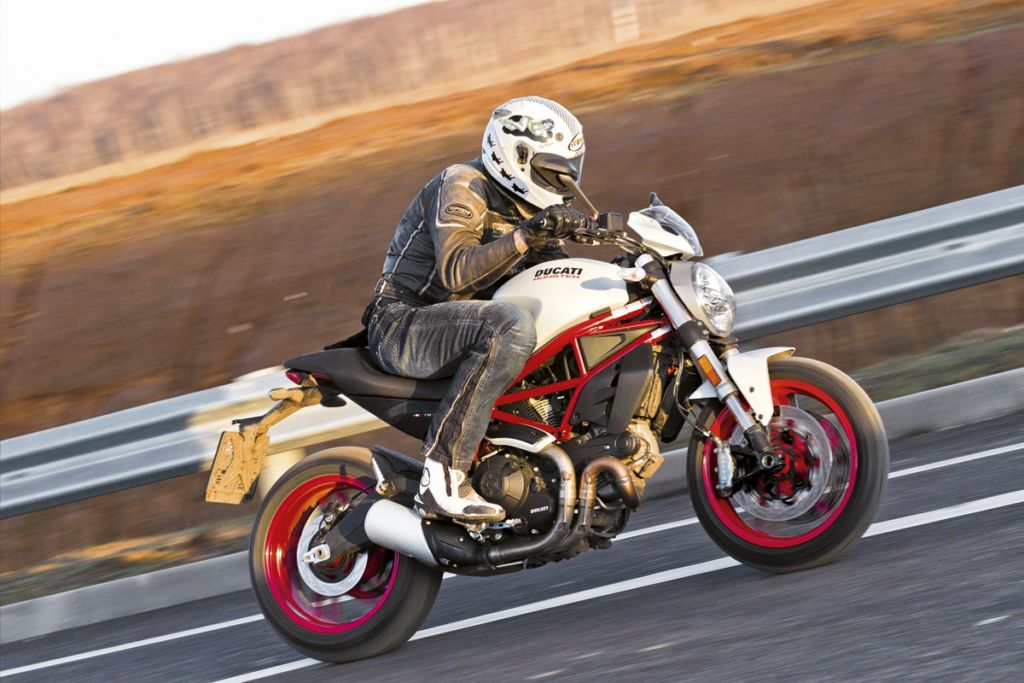
In contrast, the process of changing gears on the Kawasaki is well-refined. Interestingly, both motorcycles feel similar in terms of shifting smoothness, with the Monster being slightly stiffer. Vibrations are almost non-existent, and Kawasaki’s engineers addressed them during the engine’s design phase, whereas Ducati retained some, possibly more for marketing reasons.
So, if you don’t have a passion for Italian motorcycle classics, I don’t have compelling arguments in favor of the Ducati 797 for you. Even with the slightly increased price of the Kawasaki Z650 compared to last year (531,000 rubles versus 509,000), it remains significantly cheaper than the Ducati, which asks for 599,000 rubles for entry into the world of Italian nakeds. It’s no surprise that the “precise handling and Italian quirks” shelf looks empty, while there’s a line at the “plain, trouble-free Japanese everyday life” department.
And why do I dislike waiting in lines?


| Parameter | Kawasaki Z650 | Ducati Monster 797 |
|---|---|---|
| Dimensions (mm) Length Width** Height Wheelbase Seat Height Ground Clearance | 2055 775 1080 1410 790 130 | N/A* 800 N/A* 1435 805 N/A* |
| Fork Rake/Front Fork Offset (degrees/mm) | 24/100 | 24/90 |
| Frame | Tubular, high-strength steel | Tubular, high-strength steel |
| Curb Weight (kg) | 187 | 193 |
| Number and Arrangement of Cylinders | 2, inline | 2, V-twin |
| Cylinder Bore/Stroke (mm) | 83.0/60.0 | 88.0/66.0 |
| Compression Ratio | 10.8:1 | 11:1 |
| Displacement (cc) | 649 | 803 |
| Number of Valves | 8 | 4 |
| Max Power (hp/kW/rpm) | 68/50.2/8000 | 73/54/8250 |
| Max Torque (Nm/rpm) | 65.7/6500 | 67/5750 |
| Transmission | 6-speed, multi-plate slipper clutch, chain | 6-speed, multi-plate slipper clutch, chain |
| Front Suspension | Telescopic, Ø 41 mm fork tubes, 125 mm travel | Inverted telescopic, Ø 43 mm fork tubes, 130 mm travel |
| Rear Suspension | Monoshock, adjustments: spring preload; 130 mm travel | Monoshock, adjustments: spring preload and rebound; 130 mm travel |
| Front Brake | Two 300 mm discs, 2-piston calipers | Two 320 mm discs, 2-piston radial calipers |
| Rear Brake | 220 mm disc, 1-piston caliper | 245 mm disc, 1-piston caliper |
| Max Speed (km/h) | 200 | 200 |
| Front Wheel | 120/70-17″ | 120/70-17″ |
| Rear Wheel | 160/60-17″ | 180/55-17″ |
| Fuel Tank Capacity (liters) | 15 | 16.5 |
| Fuel Type | Petrol (AI-95—98) | Petrol (AI-95—98) |
* N/A — no data
** At the handlebar
Photo: Nikita Kolobanov
This is a translation. You can read an original article here: Kawasaki Z650 и Ducati Monster 797: беспроблемные будни с «японцем» против нескучных причуд «итальянца»

Published December 28, 2023 • 7m to read


